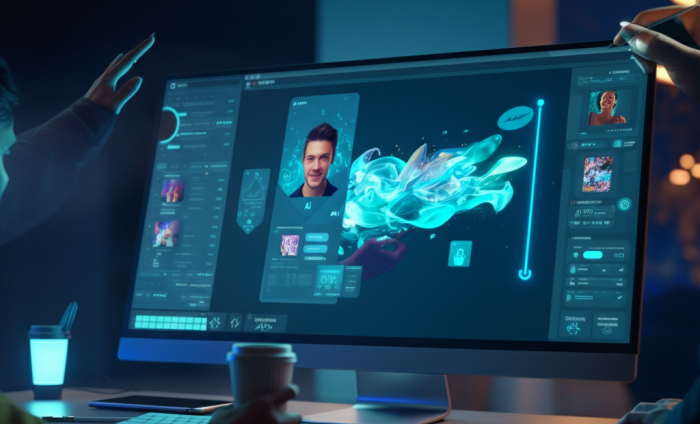The New Creative Engine: How Generative AI is Transforming Marketing

The marketing landscape is undergoing a fundamental shift, driven by the rapid integration of generative artificial intelligence. For marketing leaders in New Zealand, understanding this technology is no longer optional; it is a strategic imperative. Tools like ChatGPT, Midjourney, and Claude are not just novelties—they are becoming core components of the modern marketing toolkit, enabling teams to enhance efficiency, scale content production, and unlock new creative possibilities.
The evidence is clear. Recent data shows that 43% of marketers have already incorporated generative AI into their workflows. They are leveraging these tools to automate content creation, draft compelling copy, design visual assets, and brainstorm campaign concepts. This adoption represents a significant change in how creative work is executed, offering a path to reduce production timelines without sacrificing quality. But how can your organisation harness this power effectively while safeguarding brand integrity?
What is Generative AI? A Marketer's Guide
Before integrating any new technology, it is crucial to understand its capabilities. Generative AI refers to artificial intelligence models capable of creating new and original content, including text, images, audio, and video, based on user prompts. For marketing teams, this technology provides powerful new ways to approach creative challenges.
Here are the key players transforming marketing workflows:
- Large Language Models (LLMs) like ChatGPT and Claude: These are powerful text-generation tools. Marketers use them to draft social media posts, write email campaigns, generate blog articles, and even script video content. Their ability to process vast amounts of information makes them excellent partners for brainstorming and refining campaign messaging.
- AI Image Generation Platforms like Midjourney and DALL-E: These tools translate text prompts into high-quality images. From custom illustrations for a blog post to conceptual visuals for an ad campaign, they provide an accessible way to produce unique visual assets at scale, reducing reliance on stock photography or lengthy design cycles.
The primary advantage of these tools lies in their ability to augment human creativity, not replace it. They act as a creative co-pilot, handling repetitive tasks and providing a starting point for strategic work.
How Generative AI in Marketing Drives Measurable Impact
For marketing managers and directors under pressure to deliver growth with tightening budgets, efficiency is paramount. Generative AI offers a direct route to optimising resources and accelerating output. What does this look like in practice?
1. Accelerating Content Creation with AI
Content remains a cornerstone of digital marketing, but its production is often time-consuming. Generative AI can significantly shorten the content lifecycle. A marketing team can use an LLM to generate a detailed outline for a whitepaper, draft initial social media captions for a campaign, or create multiple versions of ad copy for A/B testing. This allows your team to move from concept to execution faster, freeing up strategic talent to focus on performance analysis and optimisation.
2. Scaling Personalisation Efforts at Speed
Delivering personalised experiences is key to engaging modern consumers, but it demands a high volume of tailored content. Generative AI makes this scalable. You can use these tools to create variations of an email campaign for different customer segments or adapt landing page copy based on user demographics. This allows for a more granular, data-driven approach to personalisation without exponentially increasing workload.
3. Enhancing Creative Brainstorming and Ideation
How do you break through a creative block? Generative AI can serve as an inexhaustible source of inspiration. By feeding it a simple brief or campaign goal, you can generate hundreds of potential headlines, taglines, or visual concepts in minutes. This process introduces diverse ideas that your team might not have considered, fostering a more dynamic and innovative creative environment. It transforms brainstorming from a blank page problem into a curation and refinement exercise.
Navigating the Challenges: AI, Authenticity, and Brand Voice
While the benefits are compelling, the integration of AI is not without its challenges. The most significant concern for marketing leaders is the potential erosion of brand authenticity and voice. An over-reliance on automated content can lead to generic, soulless communication that fails to connect with your audience.
So, how do you maintain your brand's unique identity while leveraging AI? The solution lies in a human-centric workflow.
Actionable Tips for Integrating AI into Your Marketing Strategy
- Develop Clear AI Usage Guidelines: Establish a framework that defines how and when your team should use generative AI. This should include a mandate that all AI-generated content must be reviewed, edited, and refined by a human to ensure it aligns with your brand’s tone, style, and values. The AI is a tool, not the final author.
- Train AI on Your Brand Voice: While public models are powerful, their output is inherently generic. For more advanced applications, consider platforms that allow you to train the AI on your existing marketing materials—your website copy, past campaigns, and brand guidelines. This creates a "brand-aware" AI that produces more relevant and aligned content from the start.
- Use AI for Augmentation, Not Replacement: Position AI as a partner for your creative team. Use it for initial drafts, research synthesis, and idea generation. The strategic oversight, emotional nuance, and final polish must come from your skilled marketers. This collaborative partnership ensures you gain efficiency without losing the human touch that defines great marketing.
- Prioritise Fact-Checking and Verification: Generative AI models can sometimes produce inaccurate information or "hallucinate" facts. It is essential to implement a rigorous fact-checking process for any data, statistics, or claims generated by AI before they are published. Your brand's credibility depends on it.
The Strategic Path Forward for AI in Marketing
Generative AI is reshaping the operational realities of marketing. For ambitious leaders in New Zealand, the question is not if you should adopt this technology, but how you can integrate it to drive measurable growth.
By viewing AI as a tool to empower your marketing team—to accelerate workflows, scale personalisation, and enhance creativity—you can build a more efficient and impactful marketing function. The key is to establish a transparent and accountable process where technology augments human strategy. A balanced approach will allow you to harness the power of automation while preserving the authenticity and strategic insight that truly connect your brand with its audience.


